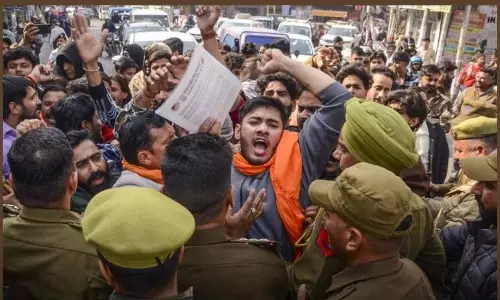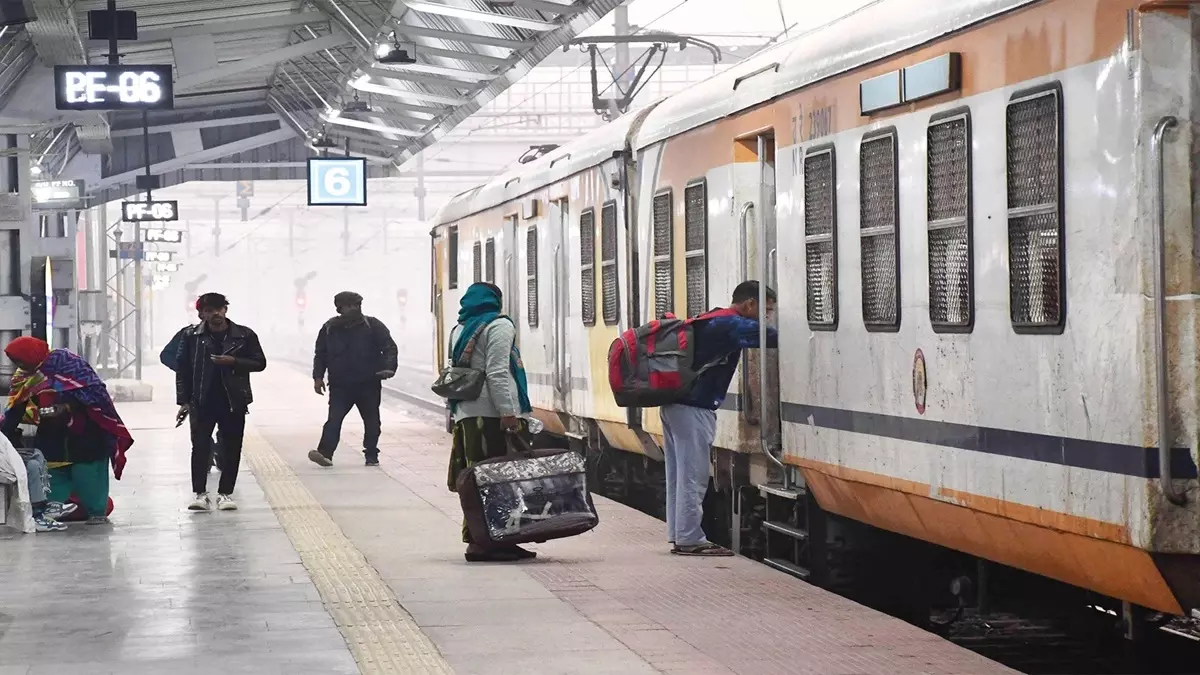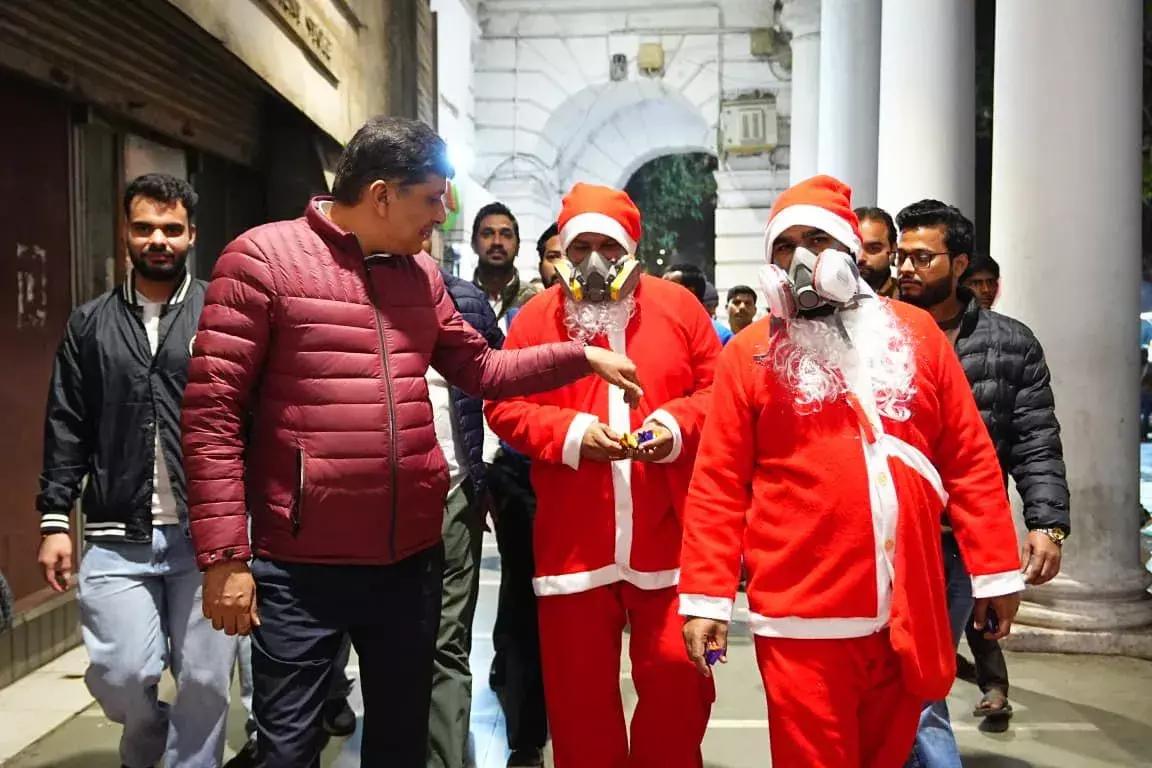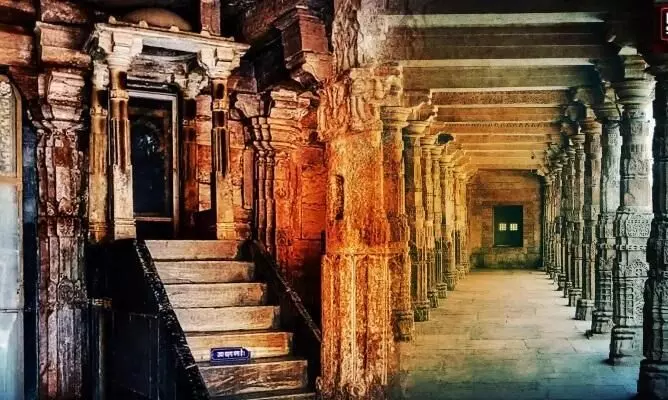
ASI finds Kamal Maula mosque built with temple remnants, not a new revelation
text_fieldsIn a report the Archeological Survey of India submitted before the Madhya Pradesh High Court on Monday, it claimed that the disputed Bhojshala temple-cum-Kamal Maula mosque complex in Dhar district, where the Kamal Maula mosque now stands, was constructed with the remnants of an old temple. However, the claim is said to be not unknown to historians who long ago documented the reuse of available materials from old temples, which was common at the time, but not the provenance of materials built after destroying a temple.
Despite the existence of the Places of Worship Act, 1991, which prohibits any change to existing religious structures as they were on August 15, 1947, except the Babri Masjid, the Supreme Court in 2022 allowed the ASI to conduct a scientific survey at the Gyanvapi mosque in Varanasi after Hindu groups claimed that it was constructed upon a temple. This action, in effect, froze the Worship Act and prompted Hindu groups to claim their rights over more Islamic structures.
Following this, the Madhya Pradesh High Court, in March of the previous year, ordered a scientific survey at the Bhojshala complex, considering a Hindu group called Hindu Front for Justice petition for clarity over the structure and its origin to remove confusion.
The Bhojshala complex holds significant religious importance for both Hindus and Muslims. Hindus venerate it as a temple dedicated to Goddess Vagdevi (Saraswati), while Muslims regard it as the Kamal Maula mosque. A unique arrangement established in 2003 allows Hindus to perform puja on Tuesdays and Muslims to offer namaz on Fridays.
Historically, the reuse of temple materials in mosque construction was not uncommon. This practice often represented a broader cultural appropriation, integrating past architectural and cultural resources into new religious and communal spaces. This phenomenon is evident at the Bhojshala-Kamal Maula complex, where the deliberate reuse of temple parts mirrors similar practices seen at other historical sites, such as the Qutb complex in Delhi.
The recent ASI report echoes earlier academic studies and historical accounts, reaffirming that the Bhojshala complex was built primarily from reused temple parts. This has long been documented by historians, including M. Willis in his 2012 article in the Journal of the Royal Asiatic Society. Willis noted that the mosque was constructed from materials collected from various old sites, a practice reflective of the period's architectural trends.
Interestingly, the name 'Bhojshala' originated in the early 20th century, coined by colonial administrators who speculated, based on limited evidence, that the mosque was originally a school established by Raja Bhoja of Dhar. However, this name and the associated narrative lack historical substantiation.
The ASI's report comes at a time when similar disputes over religious sites are being revived across India. Earlier this year, the ASI reported finding evidence of a large Hindu temple at the site of the Gyanvapi mosque in Varanasi. This has led to renewed legal and communal tensions, with Hindu groups seeking religious rights within the mosque and its eventual possession. A similar challenge is underway regarding the Shahi Idgah mosque in Mathura, which some Hindus believe sits atop the birthplace of Krishna.
The ASI report indicates that various architectural elements, including sculptural fragments, large slabs with inscriptions, and pillars with literary texts, suggest that the site once housed a substantial structure associated with literary and educational activities linked to the Paramara period.
A particularly notable finding is the Mihrab, a niche in the western colonnade wall of the mosque, which the ASI identified as a newer addition. This feature, distinguished by its elaborate decoration and distinct material, contrasts with the rest of the structure. The ASI's analysis indicates that the Mihrab was constructed using different materials from the original structure, which was built with reused parts from older temples.
The report highlights that the original temple materials were significantly altered to fit into the mosque's structure. Images of deities, humans, and various animals carved on pillars, windows, and beams were either mutilated or defaced. This modification aligns with Islamic traditions, which generally prohibit the depiction of living beings in religious contexts. Despite this, some images, like the kirtimukha (a grotesque mask often found in Hindu temple architecture) and small deity figures on window frames, remain relatively intact.
The ASI studied 94 sculptures and architectural fragments, revealing a rich tapestry of religious and cultural history. These include carvings of Hindu deities such as Ganesh, Brahma, Narasimha, and Bhairava, as well as various human and animal figures. The presence of such diverse iconography underscores the site's historical significance and its transformation over the centuries.
The inscriptions in Sanskrit and Prakrit predate those in Arabic and Persian, suggesting that the site's earliest occupants were likely engaged in literary and educational pursuits.
The report also delineates three distinct archaeological phases at the site. The first phase consists of brick structures dating back to the 10th or 11th century CE. The second phase involves an expansion using basalt stone, while the third phase features limestone materials built over the basalt structure. These findings provide a chronological framework for understanding the site's architectural evolution.
The ASI's comprehensive survey of the Bhojshala-Kamal Maula complex aims to demystify the site's origins and foster a deeper understanding of its historical and cultural significance. However, the findings may also rekindle debates and legal challenges, reflecting broader issues of heritage, identity, and religious coexistence in contemporary India.























